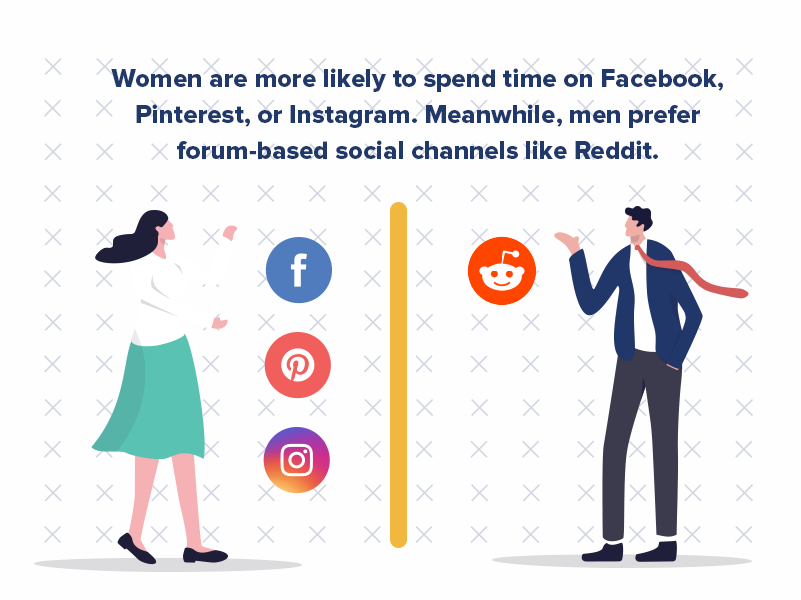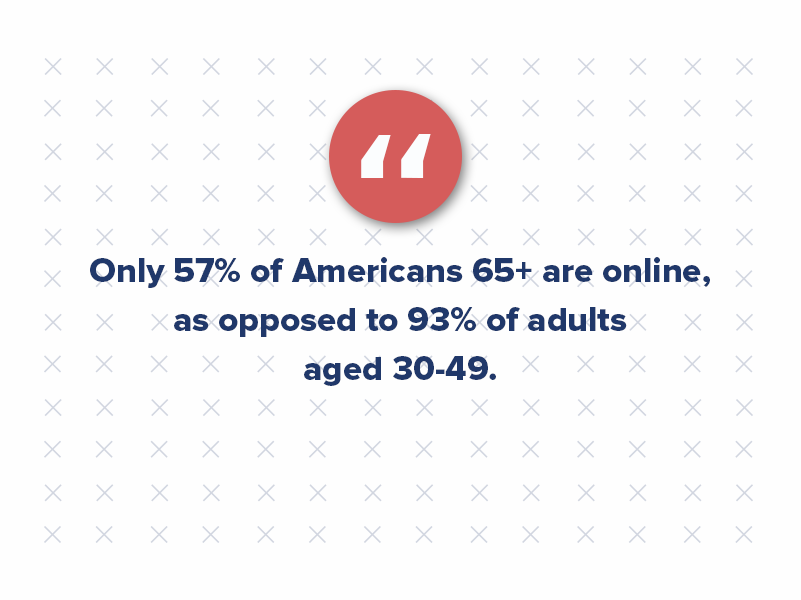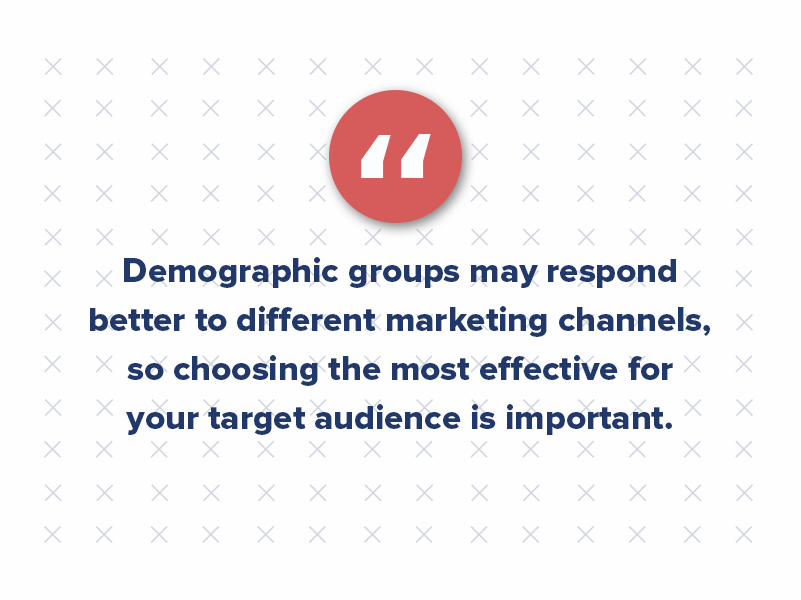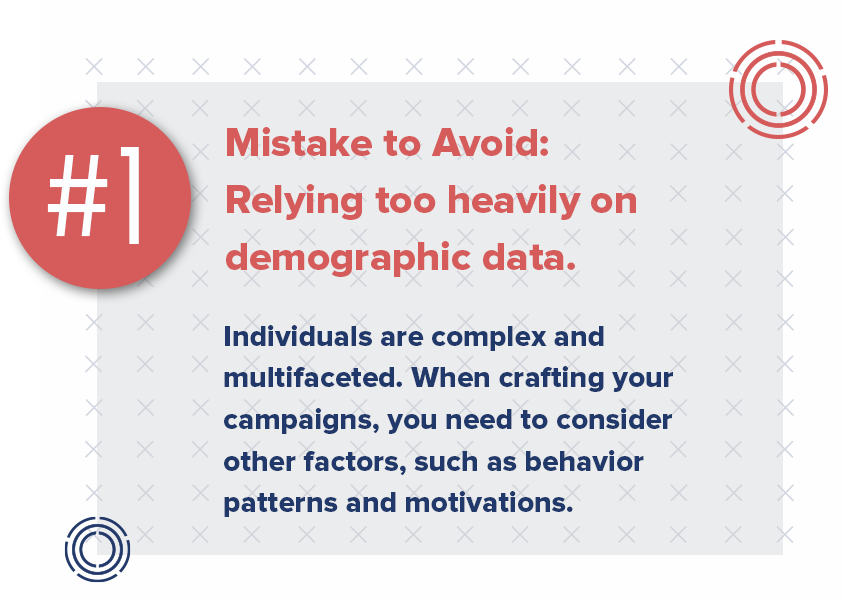Leveraging Demographics for Building an Effective Multifamily Marketing Strategy
Multifamily marketing is not just about promoting products and services; it’s about connecting with your audience. And to do that, you need to understand who your audience is.
Demographic marketing is tailoring your multifamily marketing efforts to specific groups of people based on age, gender, income, education level, and other characteristics. When you understand your audience, you can create campaigns that resonate with them, speak their language, and address their specific needs and desires. In this era of information overload, it’s more important than ever to cut through the noise and grab the attention of your demographic target market.
Demographic marketing is a powerful tool that can help you do just that. By understanding who your audience is and what they want, you can create campaigns that are not only effective but also memorable and engaging.
So let’s take a closer look at the art of demographic marketing and how you can use it to connect with your audience and drive business success.
Understanding Your Demographic Target Market
Understanding your audience is critical to the success of your property marketing campaigns. You need to know your target audience, what they want, and what motivates them. Demographic marketing allows you to create campaigns that speak directly to your audience and address their needs and desires. The more you know about your audience, the better you can tailor your campaigns to them.
Demographic marketing can also help you identify new opportunities. Analyzing data allows you to identify trends and patterns that may not be immediately apparent. For example, you may discover that a particular demographic target market is underserved in your industry and create a campaign specifically targeting that group.
Ultimately, understanding your audience helps you create more effective campaigns. When you know your audience, you can create messaging that resonates with them, choose the right multifamily marketing channels, and optimize your campaigns for maximum impact.
Gathering Data on Your Target Audience
The first step in demographic marketing is to gather data on your audience. There are many ways to do this, including surveys, interviews, focus groups, and online research. The key is to gather as much data as possible to get a comprehensive understanding of your audience.
One of the most effective ways to gather data is through surveys. Surveys allow you to ask specific questions and get quantitative data to analyze. You can also use surveys to gather qualitative data by asking open-ended questions and allowing respondents to provide detailed responses.

Another way to gather data is through online research. Many online tools and resources allow you to gather multifamily marketing data on your demographic target market. For example, you can use Google Analytics to gather data on your website visitors, including their age, gender, and location.
Analyzing and Interpreting Demographic Data
Once you have gathered data on your target audience, the next step is to analyze and interpret that data. This involves looking for patterns and trends that can help you understand your audience better.
One way to analyze data is to create charts and graphs to help you identify trends and patterns that may not be immediately apparent when looking at raw data. For example, you may discover that a particular age group is more likely to rent at your properties than others or that people with higher income levels are more likely to use your services than those with lower income levels.
Let’s take a closer look at each demographic group you’ll want to analyze:
1. Gender
Women and men think and react differently to certain things, but even more base level, they use the internet entirely differently. While men have gradually caught up with women in overall social media usage, there are differences in platform usage.
Women are likelier to spend time on Facebook, Pinterest, or Instagram, while men prefer forum-based social channels like Reddit. In e-commerce, men and women differ in how they search, with men searching by product while women searching by brand.

Knowing these key differences in usage patterns can greatly alter your marketing strategy. Targeting moms? Place ads on Facebook and post on Pinterest. Going after single young men? Post your blogs to a relevant subreddit.
2. Age
Baby boomers are online, but not to the extent of younger generations, and certainly not in the same places. Only 57% of Americans 65+ are online, as opposed to 93% of adults aged 30-49. Boomers and older Americans spend the most time checking their email. Meanwhile, younger generations split their time between social media, shopping online, and researching products.

Keeping that in mind, a boomer seeking an active adult community might appreciate a newsletter on your offerings. A millennial seeking high-rise living might prefer a tweet.
3. Income
While internet browsing gaps between people of different incomes have narrowed, this information is still important for marketers. If you’re offering a tiered service, this data can help you better target the appropriate range to the appropriate person.
Why is this important? Because you wouldn’t want to alienate a customer who thinks a product may be out of their price range when they see the higher-end price.
4. Location
This can mean country, region, or even if someone is living in an urban or rural environment. While country and lifestyle have some effect on internet usage, the reason this multifamily marketing demographic is most important has much more to do with knowing and understanding your market.
Someone in an urban environment probably won’t need an industrial-grade sitting lawnmower. Likewise, people in New York City probably don’t want to see information about car accessories. Knowing a person’s location can also help ensure that any written content sent to them matches terms to their colloquial knowledge.
For example, using “pop” vs. “soda” or “coke” depending on where in the U.S. you’re from or ensuring that they’re not seeing deals that don’t pertain to them at their location (e.g., some insurance companies don’t operate in every state).
So, you’ve gathered your basic marketing demographics and are ready to start building your multifamily marketing strategy…
Hold up a second.
There’s more to it than that. While all this information is certainly a starting point, it’s important to take it deeper. In digital multifamily marketing, we call the amalgamation of this information a buyer persona — the typical person who might engage with your product.
Creating Buyer Personas
One of the most effective ways to use demographic data is to create buyer personas. Buyer personas are fictional representations of your ideal customers based on demographic data, behavior patterns, motivations, and goals.
Creating buyer personas helps you understand your audience better and create campaigns that resonate with them. For example, if you discover that a significant portion of your audience comprises millennials, you can create a buyer persona representing a typical millennial customer. This persona can guide your messaging, multifamily marketing channels, and campaign optimization.
Crafting Targeted Messaging
Once you have created buyer personas, the next step is to craft targeted messaging that speaks directly to your audience. This involves using language and imagery that resonates with your audience and addresses their needs and desires.
For example, if your audience is primarily women, you may want to use language and imagery that is more feminine in your campaigns. You may also want to focus on topics more relevant to women, such as health and wellness.
Targeted messaging can also help you stand out from your competitors. By crafting messages that speak directly to your audience, you can differentiate yourself from other brands and create a stronger connection with your customers.
Choosing the Right Marketing Channels
Different demographic groups may respond better to different multifamily marketing channels, so choosing the most effective for your target audience is important.

For example, if your target audience is primarily millennials and Gen Z, you may want to focus on social media marketing as they are more likely to use social media than other age groups.
You may also want to consider other marketing channels, such as email marketing, content marketing, and influencer marketing. The key is choosing the most effective channels for your target audience and aligning them with your overall marketing strategy.
Testing and Optimizing Your Campaigns
Testing and optimizing your campaigns is critical to their success. This involves continually monitoring and adjusting your campaigns based on their performance.
One way to test and optimize your campaigns is to use A/B testing. A/B testing involves creating two versions of your campaign and testing them against each other to see which performs better. This can help you identify the most effective messaging, design, or marketing channel for your target audience.
You can also use data analysis to optimize your campaigns. By continually monitoring your campaigns and analyzing the data, you can identify areas for improvement and make adjustments to improve their performance.
Common Mistakes to Avoid in Demographic Marketing
There are several common mistakes to avoid when it comes to demographic marketing. One of the most significant mistakes is assuming that all members of a particular demographic group are the same. This can lead to too broad campaigns that don’t speak directly to your audience.
Another mistake is relying too heavily on demographic data. While demographic data is critical to understanding your audience, it’s important to remember that individuals are complex and multifaceted. When crafting your campaigns, you need to consider other factors, such as behavior patterns and motivations.
Tools and Resources for Demographic Marketing
There are many tools and resources available to help you with demographic marketing. Social media platforms like Facebook and Instagram allow you to target specific demographic groups with your ads. Google Analytics provides valuable data on your website visitors, including their age, gender, and location.
You can also use market research and data analytics companies to gather and analyze data on your target audience. These companies can provide insights and recommendations to help you create more effective campaigns.

Driving Business Success With Demographic Marketing
Demographic marketing is a powerful tool to help you connect with your audience and drive business success. By understanding your audience and tailoring your campaigns to their specific needs and desires, you can create messaging that resonates with them and stands out from your competitors.
Remember to gather as much data as possible and create buyer personas, then continually test and optimize your campaigns. With these strategies, you can create campaigns that are not only effective but also memorable and engaging.




